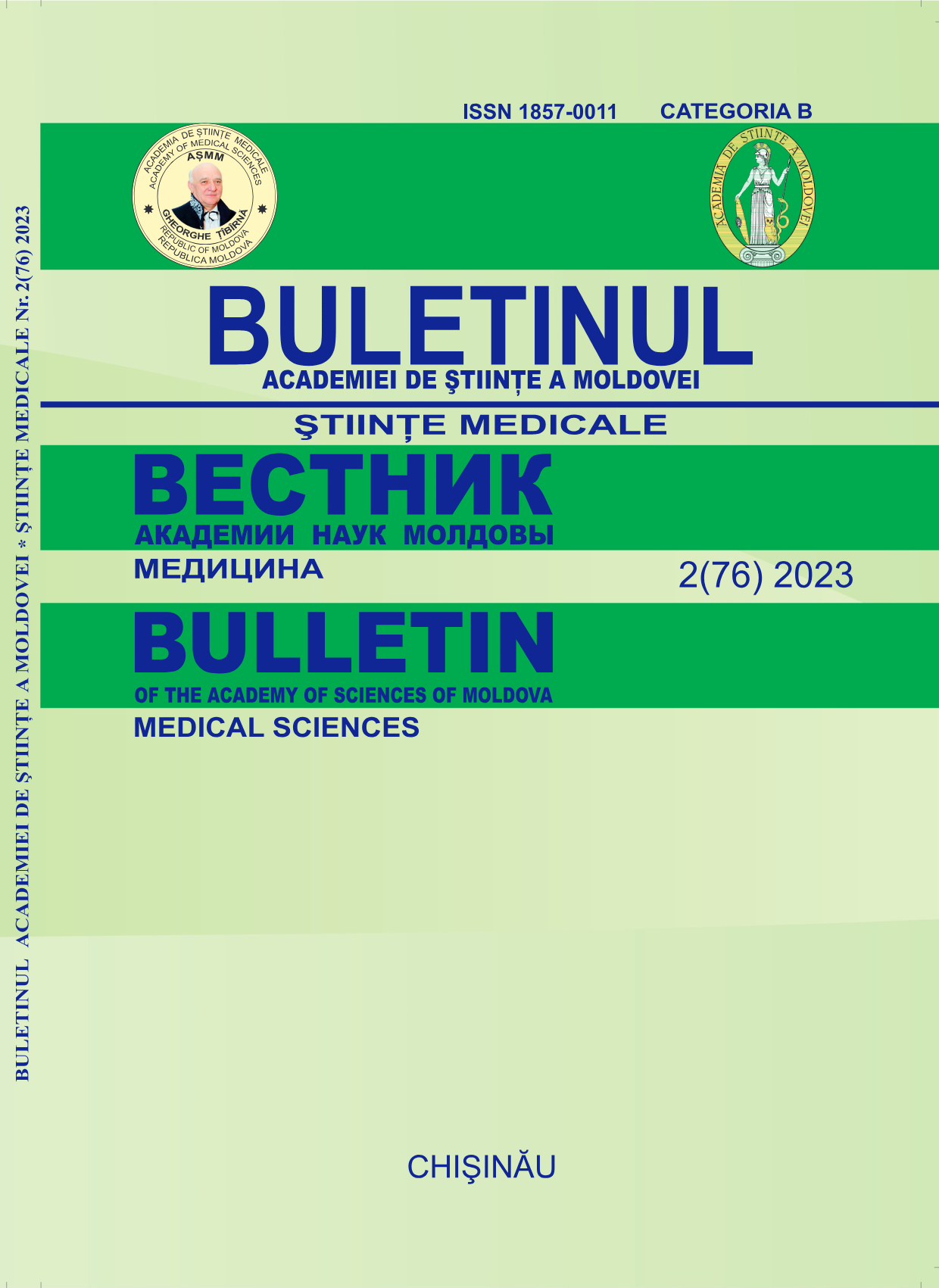The morphological peculiarities of the maxillo-facial region in children with cleft lips and palate
DOI:
https://doi.org/10.52692/1857-0011.2023.2-76.17Abstract
Introduction. Considerable variation in malocclusion was found in children with cleft lip and palate. Class III malocclusionwere found more frequently due to congenital factors, such as maxillo-mandibular growth potential as well as the severity of the defect.Material and methods. In this study, 15 cephalometric x-rays were analyzed according to the methods proposed by McNamara, Tweed, Roth-Jarabak and Steiner, and 30 cephalometric parameters were calculated for each patient with complete unilateral cleft (so many on the left and so many on the right). The data obtained from the measurements are presented in the tables corresponding to each method. Results. Maxillary and mandibular length (Cond-A, Cond-Gn) statistically significantly reduced compared to normal mean values. The threshold of significance registered for these indices demonstrates significant deviations of the previous height of the face was statistically significantly reduced by the value p<0.01 compared to the normal values (Sna-Me). The posterior vertical skeletal deficit is confirmed by the reduced value of the Hp parameter (posterior height, p<0.01), which compared to Ha, reveals a type of posterior facial rotation. The enlarged lower anterior face is demonstrated by the increased value of the anterior height index, (Sna-Me) which registered an average deviation of 6.57 mm and an increased Ha/Hp ratio (p<0.01). Conclusions. In the result of the analysis of the cephalometric analysis of the x-rays according to the McNamara, Roth-Jarabak, TweedMerriefield and Steiner methods, it was found that the cranio-facial morphology in children with unilateral cleft lips and palate was different from normal values due to the lack of growth of the facial part of the cranium both in sagittal and vertical planes.
References
Dixon MJ, Marazita ML, Beaty TH, Murray JC. Cleft lip and palate: understanding genetic and environmental infuences. Nat Rev Genet. 2011;12(3):167–78
ll B. Epidemiology of oral clefts 2012: an international perspective. Front Oral Biol. 2012; 16:1–18.
Matthews JL, Oddone-Paolucci E, Harrop RA. The epidemiology of cleft lip and palate in Canada, 1998 to 2007. Cleft Palate Craniofac J. 2015;52(4):417–2
Chizu Tateishi, Keiji Moriyama, Teruko TakanoYamamoto. Dentocraniofacial Morphology of 12 Japanese Subjects With Unilateral Cleft Lip and Palate With a Severe Class III Malocclusion: A Cephalometric Study at the Pretreatment Stage of Surgical Orthodontic Treatment. Cleft Palate– Craniofacial Journal, November 2001, Vol. 38 No. 6.
References Shetye, P.R. Facial growth of adults with unoperated clefts. Clin. Plast. Surg. 2004, 31, 361–371. [CrossRef]
Davila A.A.; Holzmer, S.W.; Kubiak, J.; Martin, M.C. Anesthetic Exposure in Staged Versus Single-Stage Cleft Lip and Palate Repair. J. Craniofac. Surg. 2021, 32, 521–524. [CrossRef]
Benitez, B.K.; Brudnicki, A.; Surowiec, Z.; Singh, R.K.; Nalabothu, P.; Schumann, D.; Mueller, A.A. Continuous Circular Closure in Unilateral Cleft Lip and Plate Repair in One Surgery. J. Cranio Maxillofac. Surg. 2022, 50, 76–85. [CrossRef]
Benito K. Benitez, Seraina K. Weibel, Florian S. Halbeisen, Yoriko Lill, Prasad Nalabothu, Ana Tache and Andreas A. Mueller. Craniofacial Growth at Age 6–11 Years after One-Stage Cleft Lip and Palate Repair: A Retrospective Comparative Study with Historical Controls. Children 2022, 9, 1228. https:// doi.org/10.3390/children9081228.
Downloads
Published
License
Copyright (c) 2023 Bulletin of the Academy of Sciences of Moldova. Medical Sciences

This work is licensed under a Creative Commons Attribution 4.0 International License.



